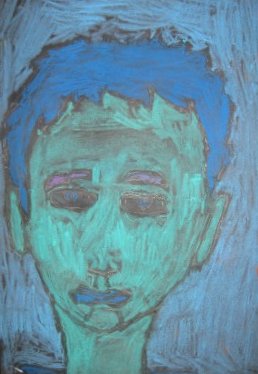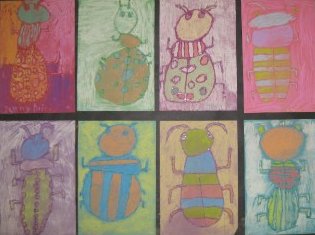Educational Philosophy
Purposeful Actions
My role as an elementary art educator is to expose students to a variety of media and techniques as well as give them an understanding of art throughout history and other backgrounds from as close to them as their own community, to as far as cultures from around the world. As students learn about Australia in their homeroom class, we study and create Aboriginal-inspired art. As students study Black History during the month of February, we read literature and create works of art based on the work of other African-American artists. Through the exploration of media, students in my classes are able to learn how to visually express their feelings, thoughts and emotions as they make meaningful connections from self to other classes and curriculum in addition to the community and the world. As an educator it is my job to educate the whole child as I encourage my students to become lifelong learners.
Interdisciplinary Connections
In the classroom I connect what students learn in art to their kindergarten through fifth grade curriculum in order to strengthen their learning and build on what they already know. If they are studying insects in first grade, we will continue on that theme by learning the body parts of a beetle as we read literature and look at other illustrations artists have made of insects. To appeal to my bodily kinesthetic learners we might stand up and act out what a beetle does and draw ourselves as a life-size beetle before we use pastels and other media to create a large colorful beetle of our own.
Positive Learning Atmosphere
I try to create a very positive classroom atmosphere where all students are encouraged and called artists. I have a huge wall that is covered from floor to ceiling with bulletin boards that I rotate student artwork on throughout the school year. The main hallway that runs through our school has become a gallery of student-framed works of art. This showcase has become quite a self-esteem builder as students show off their masterpieces to their parents and friends. Students know that it is a special privilege to have their artwork hung in the school gallery and understand that they must follow the directions and complete the assignment, use their best craftsmanship, as well as their greatest creativity in order for their artwork to be selected. I always encourage students to do their best on every assignment and often send them back to their seats multiple times until they totally finish or fine tune every aspect of their work.
Assessment of Growth
One of my favorite assessments of student work is the portfolio that students keep throughout the year. Their first drawing is a portrait of themselves doing something they enjoy doing or something they did over the summer. Throughout the year students learn about adding details and elements of art to their work and then the final drawing is another self-portrait of them doing something they like to do or something they learned that school year. We then put both works of art together into one masterpiece, along with the paragraphs they wrote to go along with their drawings. It is SO exciting to see their growth as artists after only one school year!
Continued Connections
As an educator, I model being a lifelong learner by continuing my education by taking painting workshops, through participating in staff development provided by my school or county, or by taking online classes for my master’s degree. I am a part of the North Carolina Art Educator’s Association and a member of my local Carteret County Arts Council so that I can connect with and learn from other art educators and artists. In order to stay connected to other artists and document my growth, I created a blog at: http://www.catherineolander.blogspot.com/ I hope to continue to add to this blog by including not only my own artwork, but also some of the work of my students at school.

Hot Beetle, Pastel

Kevin, Pastel
